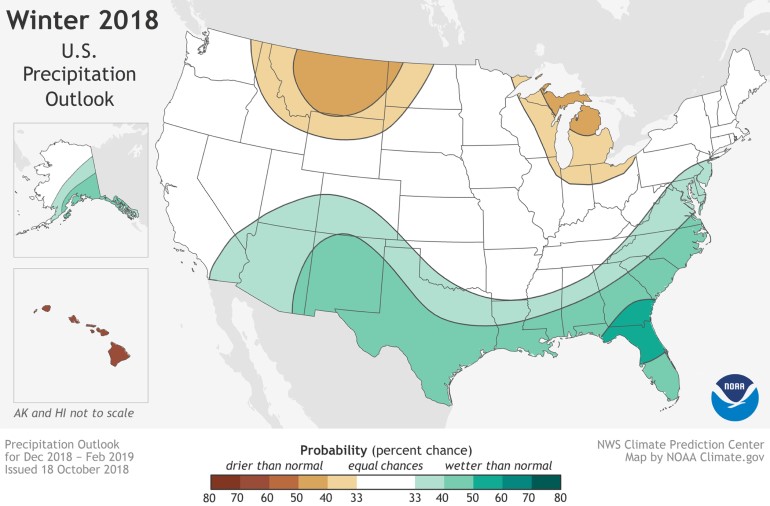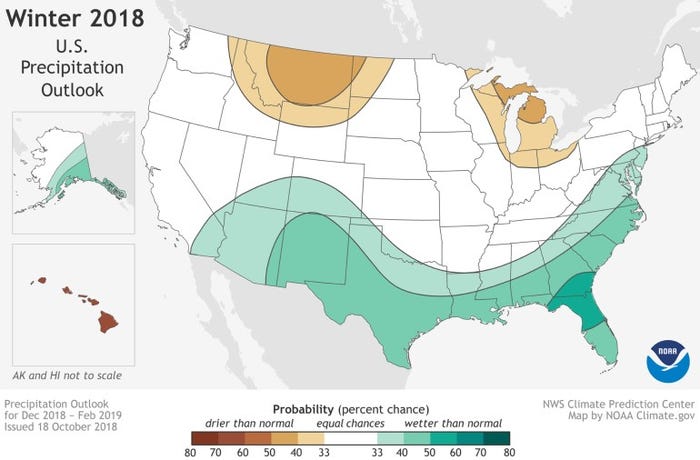Farmers’ Almanac calling for very cold winter, while NOAA projects mild winter.

A mild winter could be in store for much of the U.S. this winter, according to the National Oceanic & Atmospheric Administration’s (NOAA) Climate Prediction Center. However, the Farmers’ Almanac points toward a very long, cold and snow-filled winter.
In the "2018 U.S. Winter Outlook" for December through February, NOAA said above-average temperatures are most likely across the northern and western U.S.
Additionally, El Nino conditions have a 70-75% chance of developing. “We expect El Nino to be in place in late fall to early winter,” said Mike Halpert, deputy director of NOAA’s Climate Prediction Center. “Although a weak El Nino is expected, it may still influence the winter season by bringing wetter conditions across the southern United States and warmer, drier conditions to parts of the North.”
El Nino is an ocean-atmosphere climate interaction that is linked to periodic warming in sea surface temperatures in the central and eastern equatorial Pacific. During the winter, typical El Nino conditions in the U.S. can include wetter-than-average precipitation in the South and drier conditions in parts of the North.
Warmer-than-normal conditions are anticipated across much of the northern and western U.S., with the greatest likelihood in Alaska and from the Pacific Northwest to the northern Plains, NOAA said in its outlook.

“No part of the U.S. is favored to have below-average temperatures,” NOAA said.
However, the 2019 Farmers’ Almanac, which provides 16 months’ worth of weather forecasts for seven zones, is predicting that the 2018-19 winter will be “colder-than-normal… from the Continental Divide east through the Appalachians.”
Farmers’ Almanac editor Peter Geiger said, “Contrary to the stories storming the web, our time-tested, long-range formula is pointing toward a very long, cold and snow-filled winter. We stand by our forecast and formula, which accurately predicted the many storms last winter, as well as this summer’s steamy, hot conditions.”
The real teeth chattering will arrive in mid-February, especially in the following zones: Northeast/New England, Great Lakes, Ohio Valley, Midwest and Southeast.
“During this time, an Arctic cold front will produce blustery and bitter winds, a sharp drop in temperature and widespread snow showers/squall activity along and ahead of the frontal line,” Farmers’ Almanac reported.
The Farmers’ Almanac, which bases its long-range forecast on a mathematical and astronomical formula developed in 1818, is also predicting above-normal precipitation -- i.e., lots of snow -- for the Great Lakes states, Midwest and central and northern New England, with the majority of it falling in January and February.
About the Author(s)
You May Also Like





